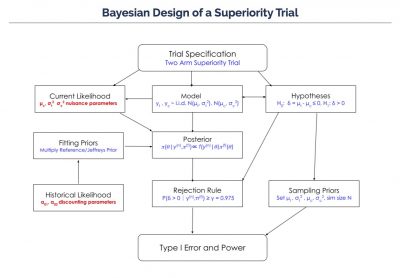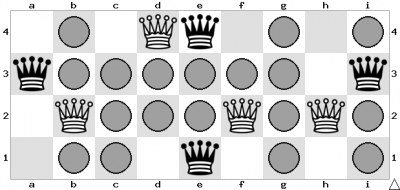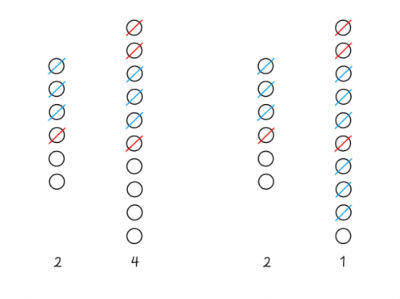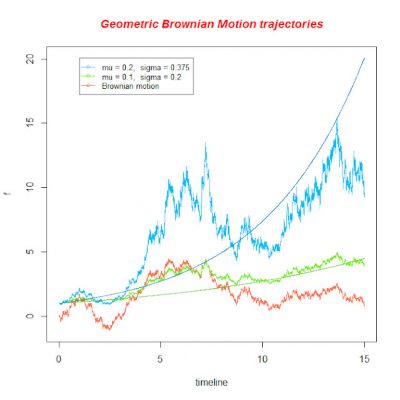Session A1
Speaker: Georgia Harbor-Collins (UConn)
(9-9:30 am MONT 111)
TBA
Abstract: TBA
Session A2:
Speaker: Heidi Benham (UConn)
(9:40-10:10 am MONT 111)
TBA
Abstract: TBA
TBA
Abstract: TBA
Session B1:
Speaker: Jasper Toman-Yih (UConn)
(9-9:30 am MONT 112)
The Life of a Ph.D. Candidate in Statistics: Looking Back and Looking Forward
Abstract: The goal of this talk is to inspire the undergraduate students to pursue the advanced degree by sharing with them my past academic and working experiences and current academic and research life as a Ph.D. candidate in statistics at UConn. This talk consists of three sections. The first section is about my past academic and working experience -- the career of the machine learning track. The second section talks about the Ph.D. life from Jan. 2022 until present. The third section discusses my current research topic, that is leveraging the historical information via power prior in the Bayesian design of clinical trials. The concept of power prior, clinical trial and the Bayesian design will be demonstrated. Finally, we show the advantages by doing so with an example of a clinical trial.
Session B2:

Speaker: Zhe Guan (UConn)
(9:40 - 10:10 am MONT 112)
Session A3:

Speaker: Herbert Siewert (Fairfield)
(1:10-1:40 pm MONT 111)
Combinatorial game theory within The Game of the Amazons
Abstract: Combinatorial Game Theory is a branch of mathematics that has only recently garnered popularity as a branch of inquiry after the seminal publications "On Numbers and Games" by John Conway and "Winning Ways for Your Mathematical Plays" by Elwyn Berlekamp, John Conway, and Richard Guy. These publications demonstrated that games between two players with no chance elements and no hidden information, including games similar to Go, Chess, and Hex, contain a rich mathematical structure which has been further expanded upon and explored in recent decades. This talk primarily focuses on exploring the foundation of this theory and then applying the theory to The Game of the Amazons by demonstrating optimal strategies within given positions.
Session A4:

Speakers: Sanjana Paul and Amy Pinargote (Smith)
(1:50-2:20 pm MONT 111)
Number Theoretic and Combinatorial Properties of Increasing Sequences of Positive Integers
Abstract: This talk focuses on increasing sequences of positive integers, in particular Complementary Sequences, which are pairs of sequences whose union gives the positive integers and which have no elements in common. Complementary sequences are related to combinatorial games, which are two-player, alternating, deterministic games with perfect information. The objective of the talk is to present some results about complementary sequences, their generation methods and their relationship with combinatorial games, as well as to present some of the research our group has been doing in this area.
Knots and Cluster Algebras: a Link Between Worlds
Abstract: Knots and links are fascinating objects with many widely studied algebraic, combinatorial, geometric, and topological properties. One important question concerning knots is that of finding invariants, which are statistics associated with knots that don't depend on how they are embedded in three-dimensional space. These are useful because they can help us tell certain knots apart; if an invariant takes one value on some knot and a different value on another, then those two knots must be fundamentally different. This talk will focus on two famous invariants that come in the form of polynomials: the Alexander polynomial and the Jones polynomial. We'll first look at a few traditional ways to describe these polynomial invariants and see some of what they're capable of. Following this, we'll take a detour into the mysterious world of cluster algebras, a relatively young but highly active area of current research with deep connections to Lie theory, Poisson geometry, representation theory, combinatorics, and much more. It turns out that, in addition to providing us with this already-lengthy list of relationships to other branches of math, cluster algebras are also capable of reproducing the Alexander polynomials of knots and links. We'll sketch this "roadmap through the clusterverse" from a knot diagram to its Alexander polynomial, and time permitting, we'll take a peek at a conjectural roadmap toward the Jones polynomial as well. This talk is based on a key result of V. Bazier-Matte and R. Schiffler, as well as the speaker's ongoing joint work with R. Schiffler.
Session B3:
Speaker: Ben Grant (UConn)
(1:10-1:40 pm MONT 112)
Stochastic Calculus and its applications in Finance
Abstract: Consider a scenario in the financial market where an investor has some extra ”in- sider” information about the future price of a stock, or another one where the stock market can face sudden “jumps” in price due to various events across the world. As an investor, can we mathematically model these scenarios and find an optimal investment strategy?
Following the work of American economists/mathematicians Fischer Black, Myron Scholes and Robert Merton on option pricing theory, which used random phenomena known as stochastic processes to model stock prices, Mathematical Finance emerged as a prominent discipline. In this talk, we shall discuss the foundations of Stochastic Calculus, which extends the methods of ordinary calculus to stochastic processes. It provides a rich set of tools to model various financial scenarios discussed above and formulate them as mathematical research problems.
Session B4:

Speaker: Rahul Krishnakumar (UConn)
(1:50-2:20 pm MONT 112)
Undergraduate Talk Abstracts:
| Analyzing the Predicting Factors of Public School Enrollment in a Regression Model by Olivia Hwang (Smith College) | I remember the walks home from my middle school at 3:00 p.m., on the dot, hordes of middle schoolers poured out of classrooms, crowding the streets daily with their bikes, band instruments, and roller backpacks. For us, the commute home was a time of relief, a comforting ritual almost, to chat and laugh with each other on the way home after a long day at school. I remembered these walks home as I read the “School Consolidation and Closure” report from the Citizens Advisory Committee on Enrollment that presented six scenarios for the budget cuts, detailing what programs or items would have to be cut and the dollar amount the cuts would save. As it turned out, four of the six scenarios included the closure of my old middle school. The cause for these budget cuts? Dwindling student enrollment. It was difficult to fathom the full classrooms, seemingly endless lunch lines in the cafeteria, and crowds of children congregating on the campus quad empty. In the end, the school board decided to close two elementary schools, consolidate another, and leave my middle school open after seeing enrollment trends in the years after. Children, current and future, who were previously intending on attending these schools would miss out on their walks home from school, their choir and home economics classes, and the fundamental development of social skills that comes from a normal elementary or middle school education. My experience is not unique, though. Birth rates around the U.S. have been falling ever since the Great Recession from 2007-2009, translating into declining public school enrollment. Moreover, public school enrollment has similarly faced dwindling numbers in recent years due to the COVID-19 pandemic. This paper aims to provide evidence towards answering how current and potential birth rate trends might impact public school enrollment by 2060. This paper uses secondary data analysis, sources from the Center of Disease and Control (CDC) and United States Census Data, compiled and organized by the Integrated Public Use Microdata Series (IPUMS). The data used from the CDC is out of the National Vital Statistics System (NVSS) which is collected through birth and death certificates of infants. Potential confounds include that fact that not all data is complete or accurate due to changes made to legal records after the data is collected. The data used from the U.S. Census is collected from the American Community Survey (ACS), an annually conducted demographic survey that uses random sampling. Non-response sampling bias is addressed through offering multiple methods of conducting the survey (phone, mail-in, or a Census Bureau representative visit), imposing fines for non-response, and data weighting to correct the non-response bias. We will use hypothesis testing and linear regression modeling to understand what the driving forces behind changes in public school enrollment are. This paper will explain different models and factors and their drawbacks and/or benefits with the intent of informing policymakers and school districts of the demographic trends that may further exacerbate current trends of declining public school enrollment. While I found no statistically significant results from the hypothesis testing in the four models, the statistics provided a helpful insight into the characteristics of the predictors that are beneficial and how to create a more accurate model for enrollment in the future. | |
| Triangular Mosaic Knots by Niko Ramirez (Wesleyan University) | Knot mosaics are knot diagrams constructed from a set of tiles with simple arcs or crossings. This talk will walk through an ongoing research project to develop a triangular variant of mosaic knots that could be used to model knots embedded in thickened surfaces via surface triangulation. Triangular mosaic knots offer a less rigid system for modeling knots without the constraint of tiling regular polygons in the plane. |